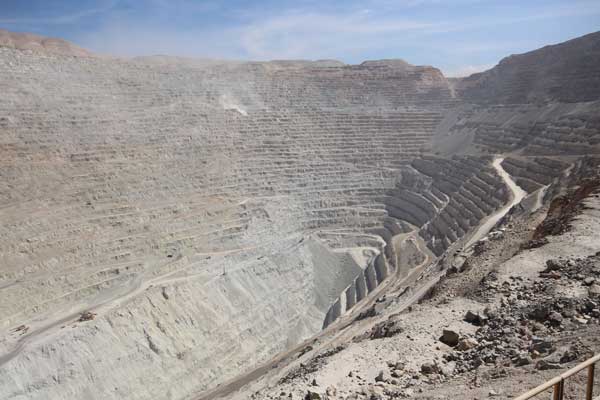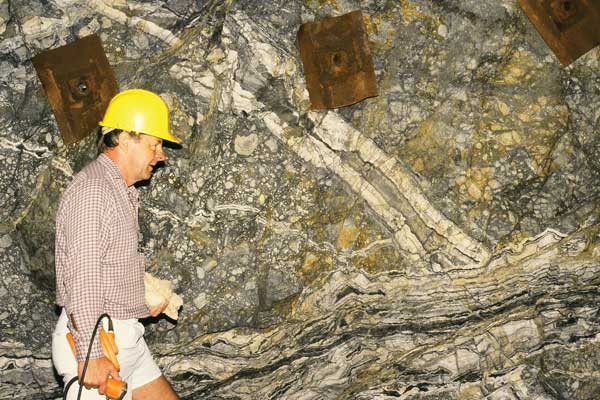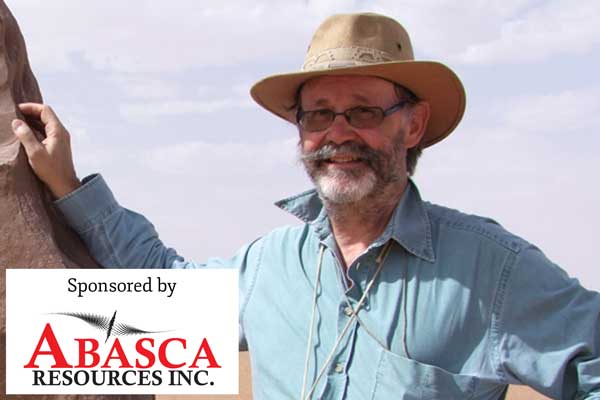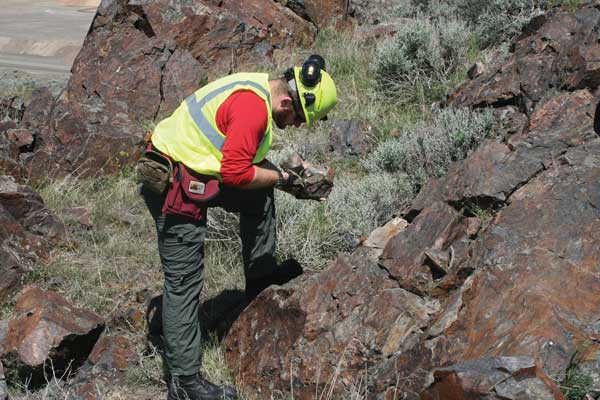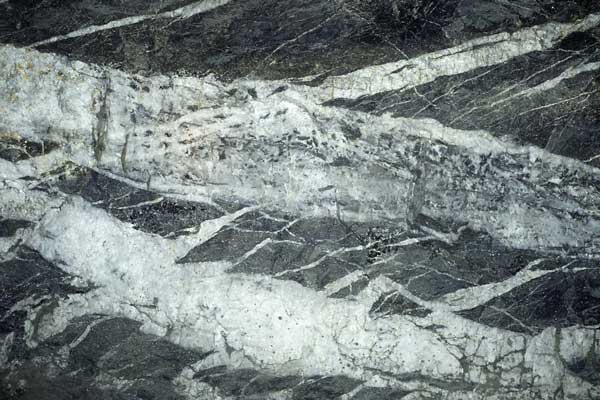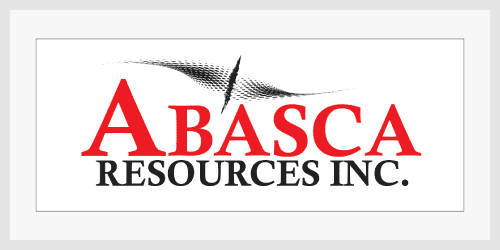SEG 2017
Workshops
Pre-Conference Workshops
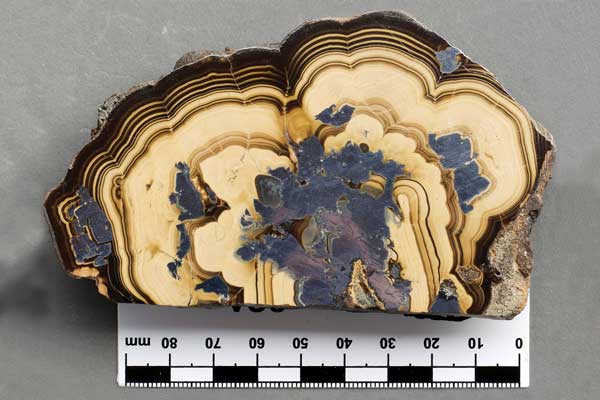
WS03 - A Global Perspective of Sediment-Hosted Zn-Pb and Cu Deposits from Genesis to Exploration
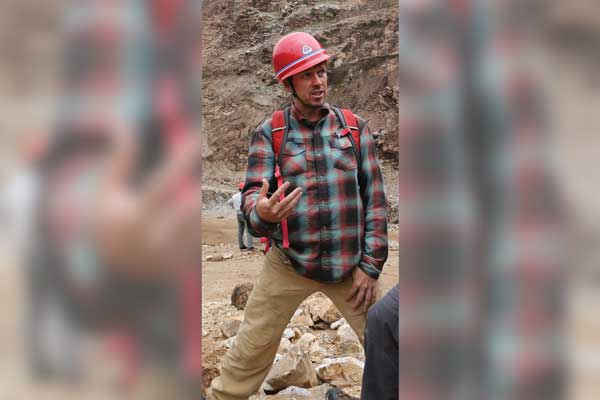
WS08 - Fluids, Minerals, and Melts: Investigating Hydrothermal Processes Using Laser Ablation-ICP-MS Techniques
- CANCELED
- Details
Post-Conference Workshops

WS10 - Understanding Orogenic Gold Deposits: Global- to Deposit-Scale Features and Exploration Criteria
Workshop Details
WS01 - Porphyry Copper, Gold and Molybdenum Deposits
Date: September 16-17, 2017
Location: China University of Geosciences, Beijing (CUGB)
Presenters: David R. Cooke, Peter Hollings
This workshop will provide a comprehensive review of porphyry copper, gold, and molybdenum deposits, covering their geodynamic setting, intrusive complexes, mineralization and alteration assemblages, zonation patterns, overprinting relationships, associated breccias, and supergene modifications. It will also review the development of the porphyry copper model and its role in mineral exploration. Case studies of major porphyry districts from around the world and new advances in porphyry exploration will be discussed.
Students will not exceed 20% of total participants.
Attendee Maximum: 200
WS02 - The Geology, Genesis, and Discovery of Epithermal Gold-Silver Deposits
Date: September 16-17, 2017
Location: China University of Geosciences, Beijing (CUGB)
Presenter: Stuart Simmons
Epithermal deposits host substantial resources of gold and silver that are often blind and sometimes very high grade. This workshop covers their geologic setting and ore-forming processes, as well as the exploration methods used to discover them. Emphasis is placed on interpreting hydrothermal alteration patterns to understand the depth level of exposure and proximity to upflow zones in which epithermal deposits form. Many deposits are described and the case histories of discoveries are reviewed, covering the spectrum of geological, geochemical, and geophysical exploration methods. All types of epithermal deposits will be covered.
Students will not exceed 20% of total participants.
Attendee Maximum: 60
- CANCELED
WS03 - A Global Perspective of Sediment-Hosted Zn-Pb and Cu Deposits from Genesis to Exploration
Date: September 16-17, 2017
Location: China University of Geosciences, Beijing (CUGB)
Presenters: David Leach, Murray Hitzman, Yucai Song
The workshop will focus on Mississippi Valley-type (MVT) and clastic-dominated (CD) zinc-lead deposits and sediment-hosted copper (SHC) deposits. Presentations on the geologic and tectonic controls on the distribution of these ores in the Earth's crust through time will provide insight into where and how these deposits form. The workshop will briefly review the origin of the ore fluids, metal solubility, and transport and precipitation mechanisms and their exploration implications. In addition to describing the global occurrences of the deposits, the workshop will describe the varied styles of these ores in China and other parts of Asia.
Students will not exceed 20% of total participants.
Attendee Maximum: 100
WS04 - Potash Deposits: Exploration, Orebodies, Economics, and Global Setting
Date: September 16-17, 2017
Location: China University of Geosciences, Beijing (CUGB)
Presenters: Mark Arundell, Tabetha Stirrett, Roger Edgecombe
Food production needs to more than double by 2050 in order to feed our growing world. Potash, along with other fertilizers, will be a major component to increase farm productivity in the future. Twenty-first century mining and mineral exploration companies need to understand the tools to minimize the expense and increase the success of a potash exploration strategy.
"Mega" potash deposits are the result of the evaporation of seawater and crystallization of potassium salts. Deposits may only be a few to several tens of meters thick but tend to be laterally continuous—individual potash beds can be traced along strike for many kilometers. These "rock salt" deposits are a mixture of sylvite (KCl) and common salt (NaCl).
The workshop will cover the following topics:
- Geology of many important potash deposits around the world, with a focus on Asian deposits.
- How to explore for potash deposits and the various exploration techniques used, such as seismic, wireline geophysics, and the significance of rock mechanics and dissolution testing.
- The differences between conventional and solution mining for potash.
- Identifying minerals commonly associated with important potash deposits (rock samples).
- Why companies report using the NI 43-101 or JORC guidelines.
- How to differentiate between mineral resources and reserves and how to properly report them.
- At a high level, understand the economics of a potash project—what makes a project financially feasible
Students will not exceed 20% of total participants.
Attendee Maximum: 40
- CANCELED
WS05 - Uranium Deposit Systems and Implication for Exploration
Date: September 16-17, 2017
Location: China University of Geosciences, Beijing (CUGB)
Presenter: Michel Cuney
During the first day, the workshop will give a general overview of the physical and chemical properties of uranium and thorium and their application to the exploration and understanding of ore-forming processes. The new descriptive (International Atomic Energy Agency) and genetic classifications of uranium deposits will be presented, together with an overview of the world's uranium resources. The evolution through time of ore-forming processes and uranium deposit types will be introduced. Then, the presentation on the fractionation of uranium during magmatic processes will define the best uranium sources and the mechanisms of formation of the uranium deposits essentially related to igneous processes.
On the second day, the other main genetic types of uranium deposits will be reviewed: hydrothermal U veins associated with granites, volcanic rocks and IOCG deposits, hydrothermal diagenetic deposits with intraand interformational and basement/basin redox control, hydrothermal metamorphic and hydrothermal metasomatic deposits, deposits related to meteoric water infiltration, and synsedimentary deposits.
Students will not exceed 20% of total participants.
Attendee Maximum: 60
WS06 - Magmatic Sulfide Deposits: From Research to Exploration
Date: September 16-17, 2017
Location: China University of Geosciences, Beijing (CUGB)
Presenters: Chusi Li, Edward Ripley, Steve Barnes
The following will be covered during the workshop: fundamentals, basic concepts, and classification; modeling: mantle partial melting, parental magma estimation, fractional crystallization, sulfur content at saturation in magma, initial PGE concentrations in magma, R-factors, sulfide liquid differentiation; physical processes in magmatic Ni sulfide systems: fluid dynamics, time and length scales, intrusion geometry and emplacement mechanisms; komatiite-related Ni deposits; intraplate magmatic Ni-Cu-(PGE) deposits; magmatic Ni-Cu deposits in convergent tectonic settings; sulfide-silicate textures, breccia ores, and sulfide melt migration; PGE deposits in large layered intrusions; and application of Re-Os, Cu, and multiple S isotopes.
Students will not exceed 20% of total participants.
Attendee Maximum: 60
WS07 - Spectral Sensing Solutions to Mineral Exploration and Mining Challenges
Date: September 16-17, 2017
Location: China University of Geosciences, Beijing (CUGB)
Presenters: Jon Huntington, Andy Green, Kai Yang
Spectral sensing technologies can provide detailed mineralogical information throughout the mining life cycle, from exploration through to mine planning and operation. Reflectance spectroscopy can rapidly characterize mineral assemblages across dif ferent ore deposit styles, such as epithermal, porphyry, and skarn systems.
Building on a strong background in mineral spectroscopy theory, this workshop aims to improve skills for identifying the appropriate spectral sensing technologies for the exploration or mining challenge. Case studies of a variety of deposit styles will be presented and various visible, near-, shortwave, and thermal infrared spectral sensing applications will be discussed. Furthermore, solutions to information extraction, product generation, and integration with geochemical and other geoscience datasets will be explored. For this, hands-on case studies will be undertaken using The Spectral Geologist (TSG) software
Students will not exceed 20% of total participants.
Attendee Maximum: 20
- CANCELED
WS08 - Fluids, Minerals, and Melts: Investigating Hydrothermal Processes Using Laser Ablation-ICP-MS Techniques
Date: September 17, 2017
Location: China University of Geosciences, Beijing (CUGB)
Presenter: Brian Rusk
Laser ablation-based microanalysis is rapidly revolutionizing our understanding of ore deposits by enabling precise trace element and isotopic analyses with high spatial resolution and high sensitivity. LA-ICP-MS trace element and isotopic analyses yield insight into a range of processes relevant to ore deposit formation, such as fluid, metal, and magma sources; fluid and magma compositional evolution; fluid-rock reaction pathways; ore and gangue mineral precipitation mechanisms; and metal partitioning among fluids, melts, and minerals. The purpose of this one-day workshop is to show how LA-ICP-MS can be applied to understanding ore deposit genesis and exploration. The workshop will include practical advice on conducting an LA-ICP-MS study along with examples, scenarios, and case studies to illustrate the usefulness of LA-ICP-MS to understanding ore deposit formation. Discussion will consider trace element and isotopic analysis of minerals, fluid inclusions, and melt inclusions. Lectures will detail instrumentation and application of LA-ICP-MS techniques to solving problems relevant to ore deposit genesis.
Students will not exceed 20% of total participants.
Attendee Maximum: 40
- CANCELED
WS09 - Application of Fluid Inclusion Studies in Economic Geology
Date: September 16-17, 2017
Location: China University of Geosciences, Beijing (CUGB)
Presenters: Jan Marten Huizenga, Lorena Ortega
This two-day workshop will focus on the fundamentals of fluid inclusion studies, including the following:
- Practical aspects of fluid inclusion studies (e.g., sample selection, sample preparation);
- Fluid inclusion petrography (i.e., principle of fluid inclusion assemblages);
- Phase diagrams of single and multicomponent systems (H2O, CO2, H2O-NaCl, H2O-NaCl-CaCl2, H2O-CO2);
- Use of the heating-freezing stage and microthermometry;
- Data collection and data presentation;
- Data evaluation using relevant examples;
- Calculation of fluid compositions and isochores using shareware.
Students will not exceed 20% of total participants.
Attendee Maximum: 30
WS10 - Understanding Orogenic Gold Deposits: Global- to Deposit-Scale Features and Exploration Criteria
Date: September 21-22, 2017
Location: China University of Geosciences, Beijing (CUGB)
Presenters: Richard J. Goldfarb, David I. Groves
This two-day workshop is for geologists from academia and industry who want to improve their understanding about the geology and genesis of gold deposits in metamorphic rocks. The workshop will provide a comprehensive overview of all aspects of the geology of gold ores in Phanerozoic and Precambrian metamorphic terranes, including the most important provinces throughout China. Aspects of the geology, geochemistry, mineralogy, alteration, structure, tectonics, and exploration approaches will be covered.
Students will not exceed 20% of total participants.
Attendee Maximum: 200
WS11 - Skarn Deposits
Date: September 21, 2017
Location: China University of Geosciences, Beijing (CUGB)
Presenters: Larry Meinert, Zhaoshan Chang
Skarn deposits are some of the largest ore deposits in the world but can be complicated in the field. This one-day workshop is designed to help explorers understand skarn deposits with common sense exploration concepts and easy-to-apply mineralogical guides. We will clarify the basic concepts and terminology, explain the current understanding of skarn-forming processes, and summarize the general characteristics of major skarn types. The focus will be on the zonation patterns in skarns that are useful in exploration, with a discussion of how the zonation pattern varies in different environments. The workshop will cover the following topics: (1) Introduction, definition and mineralogy; (2) Classification and terminology; (3) Skarn-forming processes and evolutionary stages; (4) General characteristics of major skarn types (Au, Cu, W, Sn, Pb-Zn, Fe, Mo, and others); (5) Zonation in skarn systems; (6) Factors af fecting the formation of skarns and zonation patterns; and (7) Skarn exploration techniques.
Students will not exceed 20% of total participants.
Attendee Maximum: 40
WS12 - Volcanogenic Massive Sulfide Deposits
Date: September 21-22, 2017
Location: China University of Geosciences, Beijing (CUGB)
Presenter: Thomas Monecke
Submarine hydrothermal systems represent one of the oldest and most important ore-forming processes in the geologic record. This workshop will examine the diversity of hydrothermal systems and the nature of fluid flow in submarine volcanic environments, with an emphasis on the formation of volcanogenic massive sulfide deposits. The geologic characteristics of these base and precious metal deposits and the hydrothermal processes that produce them will be discussed. Special emphasis will be placed on the interpretation of geologic settings, controls on mineralization, ore mineralogy and geochemistry, hydrothermal alteration, and enrichment in precious metals. Strategies for exploration in ancient volcanic terrains will be developed.
Students will not exceed 20% of total participants.
Attendee Maximum: 60
WS13 - Carlin-Type Gold Deposits, Geology, and Models
Date: September 21-22, 2017
Location: China University of Geosciences, Beijing (CUGB)
Presenter: Jean Cline
The Carlin-type gold deposits in northeastern Nevada, USA, comprise one of the most productive gold districts in the world, with gold production now in excess of 135 million ounces. Mining and research since discovery of the Carlin deposit in the 1960s have generated detailed descriptions of deposit geology, including recognition of features that are common to deposits across northern Nevada, though no single, widely acceptable genetic model has been developed. This two-day workshop will focus on (1) the geologic evolution of northeastern Nevada that produced an ideal geologic architecture for the deposits, (2) geologic processes in the late Eocene that were critical to deposit formation, (3) geologic models for deposit formation, and (4) the geology of Carlin-like deposits in Guizhou Province, China, including a comparison with the Nevada deposits. Presentations will include detailed descriptions of deposit geology and implications for exploration and research.
Students will not exceed 20% of total participants.
Attendee Maximum: 100
WS14 - Deformation Processes and Structural Analysis in Fracture-Controlled Hydrothermal Ore Systems
Date: September 21-22, 2017
Location: China University of Geosciences, Beijing (CUGB)
Presenter: Stephen F. Cox
The workshop is designed to provide exploration and mining geoscientists with a robust understanding of structural analysis and ore targeting in fracture-controlled hydrothermal ore systems, including orogenic gold and intrusion-related systems. Within the context of high fluid flux seismogenic systems, the workshop will examine how the formation of fracture-controlled flow systems and their structural styles are influenced by fluid pressure regimes, stress states, and fluid flow. We will explore the processes controlling why and where permeability enhancement and high fluid flux are localized in faults and examine how deformation processes influence the geometry of high fluid flux pathways and ore deposits formed within fault zones and fracture networks. Lectures will be supplemented by simple practical exercises that will further develop participants' expertise in structural analysis and ore targeting.
Students will not exceed 20% of total participants.
Attendee Maximum: 60
